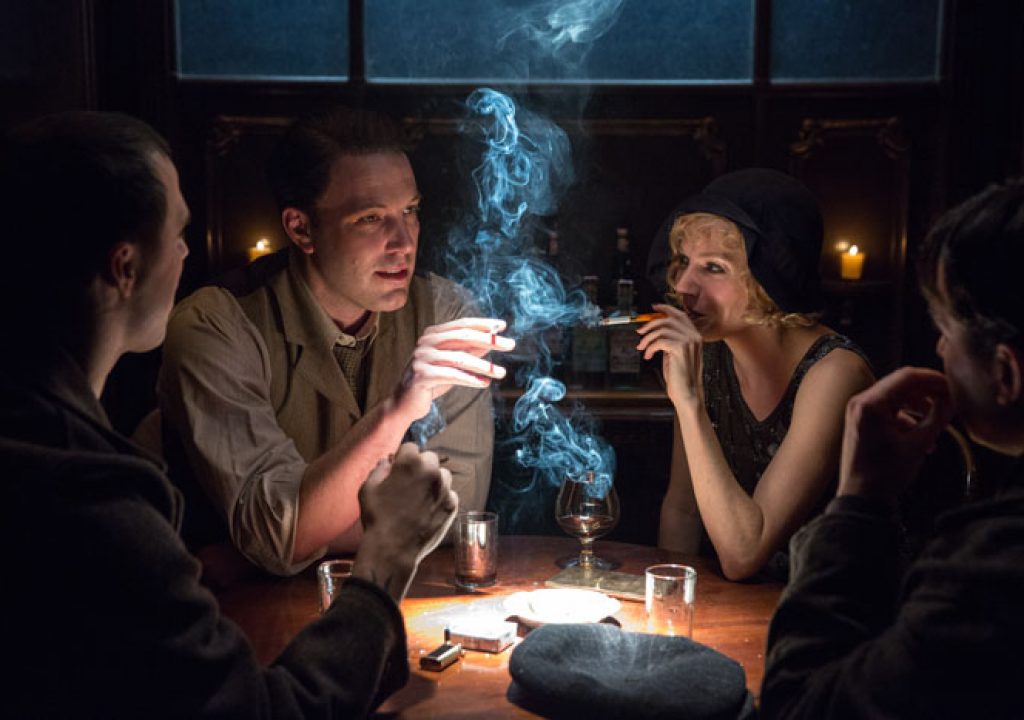William Goldenberg, ACE was nominated in 2013 for TWO Oscars for Best Editing: for Argo and Zero Dark Thirty, and won for Argo. He was nominated again, two years later for The Imitation Game. Other Oscar nominations include Seabiscuit and The Insider. Other films edited by Goldenberg include Heat, Ali, National Treasure, Gone Baby Gone and Transformers: Dark of the Moon. On this occasion, we discussed his latest film, Ben Affleck’s Live By Night.
HULLFISH: What are you working on now?
GOLDENBERG: Kathryn Bigelow’s new movie. It doesn’t have a name other than untitled Detroit Project. It’s about the 1967 Detroit riots. The riots are a backdrop to this one particular incident which I’m sworn to secrecy about. This is a new subject for her. I’m really excited about what the movie has the say and she’s an incredible filmmaker. It’s phenomenal looking and set to come out in August which is the 50th anniversary of the riots.
HULLFISH: You’ve worked with her before. There are many big directors that you’ve worked with numerous times: Michael Bay and Michael Mann among them. Obviously you’re a very talented editor but I don’t think all the talent in the world makes a director want to work with you again. If they don’t trust you and they don’t like you and you can’t spend six months or a year in the same room with someone.
GOLDENBERG: I like to think that I’m an incredibly honest person. Also, I work really hard and everybody thinks I’m fast, but to me that just means I work really hard. I put a lot of time in, so I’m always up to camera and I’m always on top of things. I make a real effort to put the film first and their needs first and I’m easy to get along with and have a sense of humor. I’m honest about where I think the film is and how I think things are going and what it needs. I just feel like those qualities are probably a big part of it. I’ve done multiple movies with multiple directors and so clearly there is something there. I think people trust me I think because I’ve done a lot to be a trustworthy person in a way that I feel like they know that they’re in good hands. Directors have so many things to worry about and so many departments to worry about. I want to be the department that they feel like, “Well, I know editing is taking care of” and I know that “editing” isn’t going to say the wrong thing to the wrong person or misplace something or do the wrong thing or make a mistake and ruin a screening. Whatever it is I want them to feel they can have complete confidence in me and my department. I go to great lengths to get great people working for me who are equally loyal and enthusiastic. I want to make the editing room sort of a haven for them.
HULLFISH: I’ve heard that from multiple people that the edit room needs to be a safe place and a place of trust.
GOLDENBERG: Whatever the project is: big, small, comedy, drama, indie… I feel like I have as much on the line as the director does. I care an incredible amount. I live and breathe this stuff. I take it very personally and I think that that shows. These directors know how much I care about the projects.
HULLFISH: Sure. Talk to me a little bit about collaboration style. I know a lot could be probably said about some of the directors you’ve worked with and their visual style or their directorial style. But I would think each one of them has a different way of collaborating with an editor.
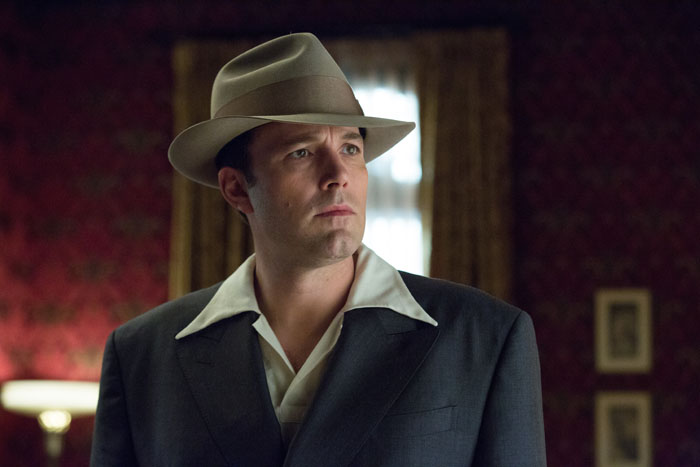
GOLDENBERG: I’ve done a few shows with Ben Affleck and a few films with Michael Bay and a few films with John Turteltaub and a couple now with Kathryn and everybody is a little bit different and yet everybody is sort of the same. We screen the movie, take notes. You do the notes during the post-production part of it and some directors, like Ben on Gone Baby Gone and Argo. He was in the room all the time and Live by Night he was in the room all the time except that at a certain point in the middle of post we were kind of near the completion of picture editing he had to go over to England and act in Justice League. Because we’d worked together for so long we were able to communicate by phone and by internet and still had the same sort of close working relationship that we did while we were in the room together because we have we have such a great rapport. Kathryn is around all day and every day. She comes in and out. Some things we do together and with some things I’ll say “Just give me a little time to work on this.” which basically means give me some time to make a bunch of mistakes before I get it right. Sometimes it’s easy to do a change with the director in the room, to change a performance for example, but to montage a whole area of the film or something more abstract, I’ll ask for time on my own so I can feel free to make mistakes and the director is not sitting there watching every one of those mistakes.
HULLFISH: I completely understand. There’s a difference between saying “Can we explore the performances of a line or a beat and find the best out of six takes?” That’s something you can do quickly and efficiently with the director behind you. But things that take longer, it’s like watching paint dry. But it’s also a process that requires trial and error that you don’t necessarily want to expose the director to.
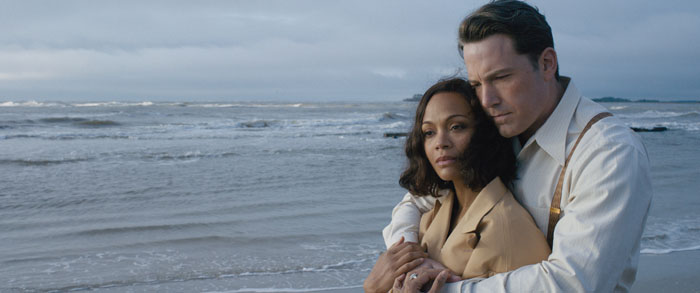 GOLDENBERG: You just want the freedom to make some potentially embarrassing mistakes and you don’t want them to see every cut that you’re making. You sometimes feel a little self-conscious about thinking freely while you’re trying to do something that’s a little bit more abstract. So I will ask them, “Give me a minute to try to something on my own here.” But however the director wants to work I’m good. I’ve done it every which way. I’ve done it where they’re with me from 9:00 in the morning 9:00 at night and we do every cut together and I’ve done it where they say “I’ll be back in three days. Here’s a bunch of changes. Any way that they’re comfortable with, I’m fine. I just feel like that’s my job to be there to help him or her achieve their vision of their film and I want to bring some thing to that and ultimately I feel like my job is to achieve their vision. So however they want to do it that’s good for me. I’m just literally happy to have a job. Grateful to be with some of these filmmakers that are so incredible. There are certain directors who are looking for more guidance than others. I’ve worked with younger directors who are a little bit more naive as to what comes next. And then there are seasoned directors who have done it a million times and they’re just like “This is how I’d like to do it,” and that’s great. So in terms of collaboration, while I’m first cutting and they’re shooting, most of the directors have been very similar. I’m cutting during the week and hopefully staying up to camera. Then on PIX or DAX or one of those secure dailies website, I post that week’s cuts for them to look at and hopefully they give me feedback. The more I can discuss the cut footage or the dailies with them while they’re shooting the more that helps me in terms of understanding what they’re looking for and getting little clues as to what they might like in performance or tone or whatever it might be.
GOLDENBERG: You just want the freedom to make some potentially embarrassing mistakes and you don’t want them to see every cut that you’re making. You sometimes feel a little self-conscious about thinking freely while you’re trying to do something that’s a little bit more abstract. So I will ask them, “Give me a minute to try to something on my own here.” But however the director wants to work I’m good. I’ve done it every which way. I’ve done it where they’re with me from 9:00 in the morning 9:00 at night and we do every cut together and I’ve done it where they say “I’ll be back in three days. Here’s a bunch of changes. Any way that they’re comfortable with, I’m fine. I just feel like that’s my job to be there to help him or her achieve their vision of their film and I want to bring some thing to that and ultimately I feel like my job is to achieve their vision. So however they want to do it that’s good for me. I’m just literally happy to have a job. Grateful to be with some of these filmmakers that are so incredible. There are certain directors who are looking for more guidance than others. I’ve worked with younger directors who are a little bit more naive as to what comes next. And then there are seasoned directors who have done it a million times and they’re just like “This is how I’d like to do it,” and that’s great. So in terms of collaboration, while I’m first cutting and they’re shooting, most of the directors have been very similar. I’m cutting during the week and hopefully staying up to camera. Then on PIX or DAX or one of those secure dailies website, I post that week’s cuts for them to look at and hopefully they give me feedback. The more I can discuss the cut footage or the dailies with them while they’re shooting the more that helps me in terms of understanding what they’re looking for and getting little clues as to what they might like in performance or tone or whatever it might be.
HULLFISH: Do you ever wish PIX and those other systems didn’t exist so that you were actually able to spend more time watching with the director instead of them watching it whenever they want and you get notes back?
GOLDENBERG: In a perfect world I wish they were sitting with me because I have control over the way it looks and the way it sounds. In the screening room you know what they’re going to see. Otherwise they’re maybe watching it on a laptop without headphones in a noisy room. I have that horrible feeling that they’re watching it in shitty circumstances or shitty surroundings and then that makes the work look bad. But that’s just the way it is. On Argo Ben has an editing room in his house so on Friday afternoons my assistant would take all the cuts and put them in his system. And then on Sundays I went to his house and we watched all the cut footage from that week together, which is really helpful. We just spent about three hours watching the cuts and discussing them. I would have not only the changes to the sequences but all these discussions about the film to really inform the next week’s editing. Ben is really busy on Live By Night. He’s the writer, director, star and producer, so asking for any more of his time would really feel selfish. We’ve done three movies and that’s a lot of days in the editing room together. Both of us are very comfortable and trust each other. He can be completely honest and open with me and the same goes for me with him. Every editor, I think they would say the same thing, you send the director a sequence to watch — whether it’s your first film or your 25th — it’s a totally nerve-wracking experience. And now with these web-based delivery systems it’s even more nerve-wracking because you’re not there when they watch it. You sit and wait for the phone to ring or for them to or send you an e-mail and tell you what they thought. That horrible feeling never goes away where you’re waiting for feedback.
HULLFISH: How do you approach a new scene from the very beginning to getting something that you feel is a good first pass?
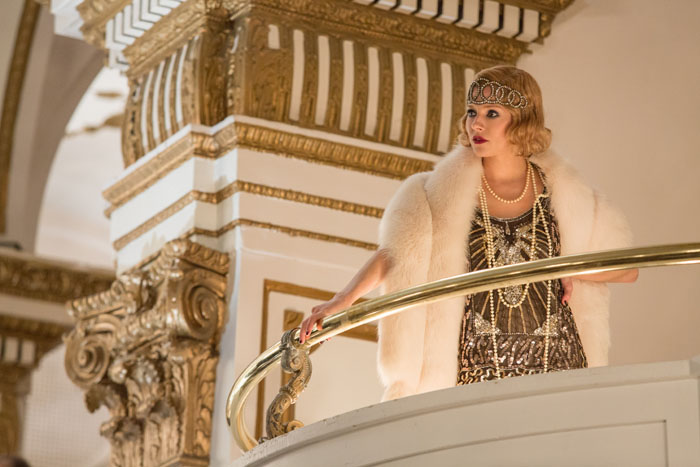 GOLDENBERG: I was Michael Kahn’s assistant for four years so I use all his methodology. I start by re-reading the script for the scene. By that time I’ve read the script several times. But I re-read the scene and the scenes that come before and the scenes that come after. I have to refresh my understanding of where each character is and where we are in the story so I’m not just cutting in limbo.
GOLDENBERG: I was Michael Kahn’s assistant for four years so I use all his methodology. I start by re-reading the script for the scene. By that time I’ve read the script several times. But I re-read the scene and the scenes that come before and the scenes that come after. I have to refresh my understanding of where each character is and where we are in the story so I’m not just cutting in limbo.
HULLFISH: You’re cutting in context.
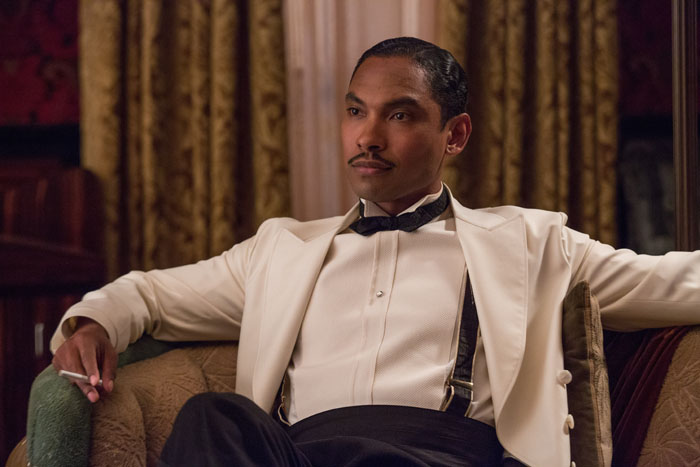 GOLDENBERG: Exactly. I’m looking at the dailies with that context in mind and make very, very specific notes. I used to handwrite them on paper but now I actually type it on the locators and look at the locator windows. And then I try to take a specific point of view. Whose point of view am I taking, am I telling just the text of the story or am I telling the emotional story? Is it just about moving the plot forward or is there some deep, emotional moment. If you’re looking to tell the emotional story, I think that’s what really gets the audience rooted and it’s not just how we got from A to B. What is each character going through and what is the subtext of the scene? So I tend to look for pieces and performances that tell that story as much as I am looking for storytelling pieces that are just plot-driven. I try to do to do all that in my head before I ever start cutting, so that when I start cutting I know exactly what story I’m trying to tell and what I’m trying to accomplish as opposed to just, “Here I go!” You just throw pieces together. I think you get lost and you come up with something that’s just sort of homogenous that way. When I worked for Michael Mann we were doing The Insider. What we were trying to do with every scene in that movie was to try and find the most real moments; the key moments in the scene and try to find the most real performances that would make it feel like you weren’t watching a movie anymore; that it transcended that and you thought you were watching reality. That’s a very high standard, but as close as you can get and build a scene around those pieces and performances. There are times when I know I want to see something in the middle of a scene, like a key line where I want to be on a specific performance. And sometimes what I’ve done is start with that and build the scene out from the middle, because I know this is the anchor of the scene. Then I want to build off of that and work my way to the end and then back to the beginning and then just shape it. You can get stuck that way when you start in the middle and then suddenly get back at the beginning and you realize this doesn’t work. Michael Kahn would always say the first few cuts of a scene are going to dictate where you’re going. So a lot of times breaking the back of that will often be the key to getting through the entire scene, so for a dialogue scene, that’s kind how I would approach it.
GOLDENBERG: Exactly. I’m looking at the dailies with that context in mind and make very, very specific notes. I used to handwrite them on paper but now I actually type it on the locators and look at the locator windows. And then I try to take a specific point of view. Whose point of view am I taking, am I telling just the text of the story or am I telling the emotional story? Is it just about moving the plot forward or is there some deep, emotional moment. If you’re looking to tell the emotional story, I think that’s what really gets the audience rooted and it’s not just how we got from A to B. What is each character going through and what is the subtext of the scene? So I tend to look for pieces and performances that tell that story as much as I am looking for storytelling pieces that are just plot-driven. I try to do to do all that in my head before I ever start cutting, so that when I start cutting I know exactly what story I’m trying to tell and what I’m trying to accomplish as opposed to just, “Here I go!” You just throw pieces together. I think you get lost and you come up with something that’s just sort of homogenous that way. When I worked for Michael Mann we were doing The Insider. What we were trying to do with every scene in that movie was to try and find the most real moments; the key moments in the scene and try to find the most real performances that would make it feel like you weren’t watching a movie anymore; that it transcended that and you thought you were watching reality. That’s a very high standard, but as close as you can get and build a scene around those pieces and performances. There are times when I know I want to see something in the middle of a scene, like a key line where I want to be on a specific performance. And sometimes what I’ve done is start with that and build the scene out from the middle, because I know this is the anchor of the scene. Then I want to build off of that and work my way to the end and then back to the beginning and then just shape it. You can get stuck that way when you start in the middle and then suddenly get back at the beginning and you realize this doesn’t work. Michael Kahn would always say the first few cuts of a scene are going to dictate where you’re going. So a lot of times breaking the back of that will often be the key to getting through the entire scene, so for a dialogue scene, that’s kind how I would approach it.
HULLFISH: What about some massive set piece scenes that you’ve done for a bunch these directors that are very complicated? How does your approach have to change when you have a much more complicated scene with a billion different set ups?
GOLDENBERG: Well the most extreme example of that was when I cut the raid on Bin Laden’s compound in Zero Dark Thirty. The raid is about 38 minutes in the film and we had 40 hours of dailies for that sequence and it was an overwhelming amount of film. Six cameras on everything and every piece of action is simultaneous. So there were always three or four or five things happening in the compound at the same time. How to tell that story and how to pick the pieces was so complicated and there were visual effects involved. All those stealth helicopters are CGI and having to deal with that as well, so that’s probably the most complicated sequence I’ve ever cut. It took me six weeks, six days a week, 14 hours a day to put in first cut (500 hours). The footage is incredibly dark, so for a lot of it the dailies were very hard to see. I had to have the room so dark I couldn’t even see the hand in front of my face. It was really kind of unnerving to be in that headspace all the time. It was really hard to figure out how to tell a simultaneous story like that. I just did it really methodically. I would cut a section at a time, I watched six-seven hours of dailies for one particular section and marked every single piece of film that I thought was interesting and why I thought it was interesting. It took a lot of time to organize, but I wanted everything I thought to be written very clearly because I knew that I would never remember where any of it was. It was just too much footage. I was really careful to organize it in a way that I could get back to things. There was so much good footage that I could have cut a whole other version of that scene that would have been equally as good because there were all these other shots I couldn’t use.
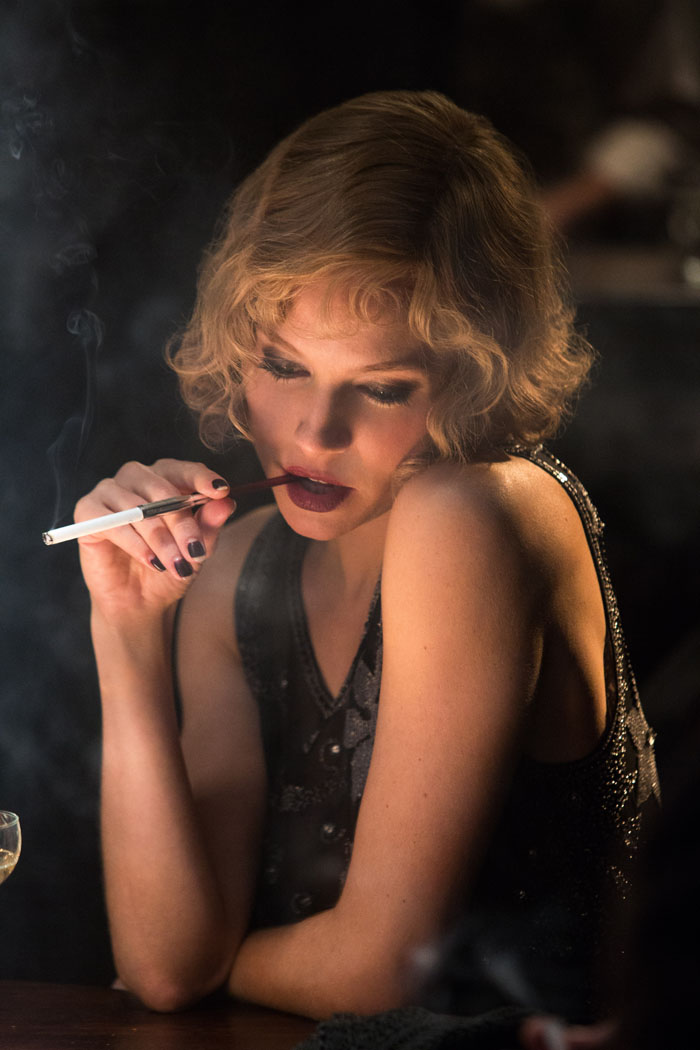
It was so beautifully done. Once I knew all the pieces that I might use, I put them into a giant select reel in sequence order. So it was like this giant cut with overlapping action and three versions of the same action, then I just start whittling it down and whittling it down over days and days and days and tightening it and figuring out. Then it all sort of reveals itself as you sort of eliminate things and you find out what the really great pieces of film are. It’s like building a giant sculpture. You just keep working at it and working at it and working at it. Eventually the parts of the story you are trying to tell reveal themselves and then you try to get the story-telling stronger and stronger and eventually it does come together. I’m sure this happens to you, where you get to work at 9:00 in the morning and then you stand up at 9:00 at night and you don’t really know how you got there. You feel like, “Wow, I did some really good work today.” Just trying to keep all those balls in the air was the really the most difficult thing. Plus, because the whole sequence is so dark and the geography can be unclear – white walls and SEALs that are all dressed the same and who’s where and who’s doing what in which part of the compound – we figured out a way to root people by using this one sniper who was up on a roof and every time we wanted to orient people we came back to his point of view and I think it gave the audience something to hold on to. In a way, it’s harder than doing a sequence in a Transformers movie where you have this alternate universe where things can look however you want them to look where Zero Dark Thirty had to be completely realistic. So it adds a degree of difficulty because once you take people out of a movie like that, they’re out.
HULLFISH: You mentioned earlier that one of the things that you really thought was important was that people really cared. I’ve found that, maybe a little counterintuitively — action sequences need that sense of “What are the stakes?” And you need to have some investment in the people that are in the situation.
GOLDENBERG: There’s one editor and one director who helped me the most with that. When I was working on The Long Goodnight – which is really early in my career – it was a big break for me and it was a huge movie to get on my own. For about six weeks John Wright came on the movie. He’s the editor who cut Speed and The Hunt for Red October and I had actually worked for him on my first job as an apprentice, so I knew John really well. I saw him work on some of the action scenes and he really was conscious of – in this case, Gina Davis – being likeable and the audience really relating to her and really feeling what she’s going through in a way that I didn’t really quite get when I first cut the movie. It was such a great lesson and I’ve held that with me my entire career.
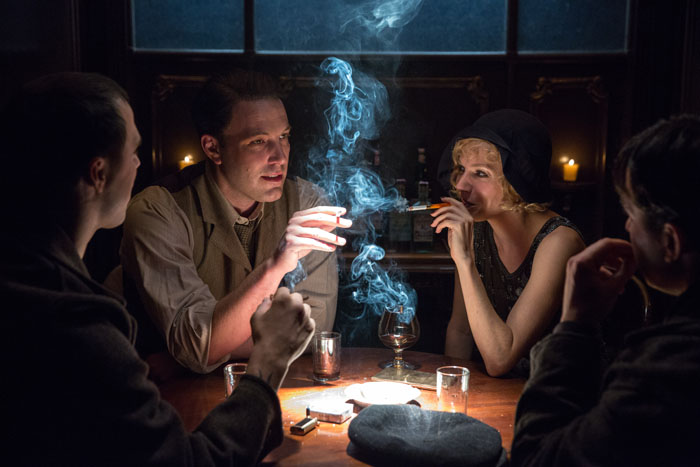 You can have the biggest car stunts and big explosions, but if the audience isn’t rooted with the characters then it’s just a bunch of noise. I’m always conscious of being with our characters and what their dilemma is and what they’re trying to accomplish. The best action scenes are always the ones that have a story, which is what we did in Seabiscuit. Gary Ross made sure that every horse race had its own story. It wasn’t just, “Here’s a race and maybe Seabiscuit wins it…” Every race had its own different story that at the end of the race, the story had been advanced. HULLFISH: You’ve done a bunch of movies that are true stories – Argo, Unbroken, Imitation game, Zero Dark Thirty – and a bunch of wildly fantastic stories like Transformers and National Treasure. Is the editing approach between those two types of movies different?
You can have the biggest car stunts and big explosions, but if the audience isn’t rooted with the characters then it’s just a bunch of noise. I’m always conscious of being with our characters and what their dilemma is and what they’re trying to accomplish. The best action scenes are always the ones that have a story, which is what we did in Seabiscuit. Gary Ross made sure that every horse race had its own story. It wasn’t just, “Here’s a race and maybe Seabiscuit wins it…” Every race had its own different story that at the end of the race, the story had been advanced. HULLFISH: You’ve done a bunch of movies that are true stories – Argo, Unbroken, Imitation game, Zero Dark Thirty – and a bunch of wildly fantastic stories like Transformers and National Treasure. Is the editing approach between those two types of movies different?
GOLDENBERG: I don’t think so. On a basic level I think you’re trying to tell a great story. There’s an added responsibility I feel when I’m doing movies that are true stories. Oftentimes I’ve gotten to meet the people or the families of people involved. I know how many lives have been affected by these things and it does add an overwhelming feeling of responsibility to get it right. Sometimes doing fantastical movies can be very freeing, mentally you don’t feel as overwhelmed about getting it wrong. The movie I’m doing with Kathryn right now, we don’t want to change some of the sequence of events because that wouldn’t be true to the real story. That’s inhibiting because you don’t have the freedom to just mess with that timeline any way you want because you feel so obligated for it to be real and represent the truth the best way possible. At the end of the day it’s storytelling. You try to tell great story and captivate your audience and make them feel something. So on that level it’s the same.
HULLFISH: Pacing a movie is something that I’m interested in… the pacing of the overall movie. Take, for example, Seabiscuit. You know you’ve got these big race scenes that you know you’re probably going to edit fast. Do you then intentionally pace the scenes around them slower?
GOLDENBERG: I do what I do so much by feel that it would depend on each individual sequence and each individual film. I do what inherently feels right to me. And then there’s the ongoing process of shaping as you watch the film. Is it weirdly paced? Is it evenly paced? Or too flat? Or need more dynamic range?
I did do something more deliberate, though, on Live by Night. The first third of the movie takes place in Boston and the end takes place in Tampa, Florida. It’s not very overt but I tried to make the Boston section of it feels a little bit more film noir – darker, more monotone – and make the pace clip along in a sort of more edgy sort of like East Coast feel. And then when we got down to Florida – which is this world of cigar factories and rum running – I wanted to make it feel like the editing had that kind of feel to it. I was consciously trying to give it that bluesy feel for lack of a better way to put it. But I didn’t want to make it so overt that it was it felt stupid. It’s subtle but I did have that in my mind when I was cutting it.
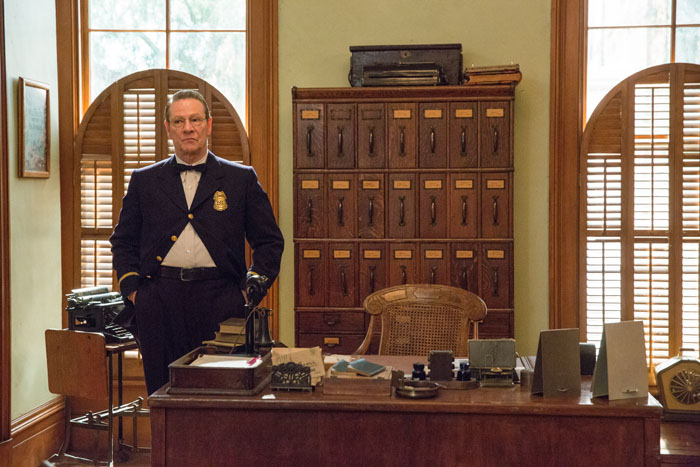 Bob Richardson shot the movie. There are these beautiful wide shots. He shot in Florida and they did several sequences in long takes where half a scene would be done in the one long master. So I had to pay attention to the way it was shot obviously. But there was an effort to try and differentiate the two locations.
Bob Richardson shot the movie. There are these beautiful wide shots. He shot in Florida and they did several sequences in long takes where half a scene would be done in the one long master. So I had to pay attention to the way it was shot obviously. But there was an effort to try and differentiate the two locations.
HULLFISH: Obviously, we get scenes out of order. What kind of pacing changes do you find happen when scenes you’ve cut out of sequence are finally put in context?
GOLDENBERG: The objective is to tell the story in the most efficient way possible so that you feel like you’re not having emotional redundancy or dialogue redundancy. Try and look at big story arcs of the movie. So there is a cut of each scene as its own little movie at the beginning of the process because you don’t have the surrounding material. What’s really important for me to pay attention to is the dynamic range in the pacing. I want to feel the overall rhythm of the story and feel where you want to speed up and where you want to slow down.
HULLFISH: What’s one of the last things you learned about editing?
GOLDENBERG: I learned that if the audience is engaged in the story you could almost put your home movies in there and they wouldn’t care. You know I think the audiences are so hungry to feel like they’re in the sure hands of the filmmakers and that they are being told a great story. The more I do this the more I feel like there are no rules, so it’s made me think more outside the box.
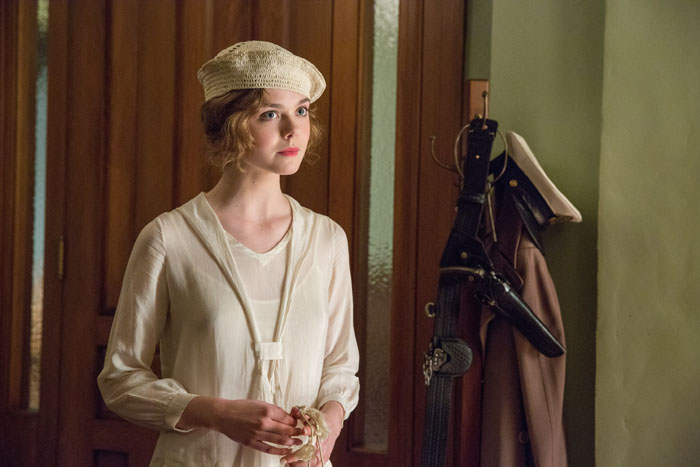 HULLFISH: Did you have a mentor?
HULLFISH: Did you have a mentor?
GOLDENBERG: Well, Michael Kahn’s my biggest mentor. I mean he really is a mentor to me and it was like going to graduate school. I worked for him for four years and he taught me how to look at things critically, how to handle myself politically, how to approach scenes, how to take criticism. Also, Dede Allen on The Breakfast Club. It was so exciting to be around her. I would call her more of a major influence than a mentor. Michael Mann has been a mentor of mine too because he hired me when I only cut a couple of cable movies and one feature. When he hired me it was just such an unbelievable break. It changed my career and it changed my life, but he also taught me so much about filmmaking and his process and storytelling. I’ve done four films with him and now we’re really good friends, I’ve known him for over 20 years. I’ve learned so much smart filmmaking from him, he does things in a way that are simple and unique. It was an incredible influence on me during my career.
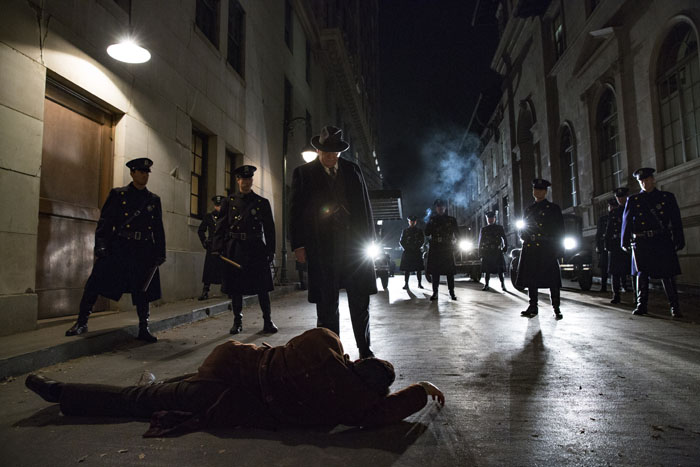 HULLFISH: Do you ever suffer “editor’s block?”
HULLFISH: Do you ever suffer “editor’s block?”
GOLDENBERG: I’m terrified every time I start. One of the best things Michael Kahn ever taught me was: One cut at a time. Worry about the cut in front of you. Worry about the scene you’re working on, the cut you’re working on. Free your mind from the stress of worrying about the fact that it’s a hundred-million dollar movie or whatever it is. Just worry about what it was right in front of you and be very focused about that.
HULLFISH: I’ve talked to more than 60 editors at this point and I am no longer amazed at the number of people who have said “Sometimes I just don’t know what to do.”
GOLDENBERG: I’ve only put stuff down a couple of times. There was a sequence in Concussion where I couldn’t figure out how to do it for the life of me. And I just stopped working on it for a while. I’ll stay till 3:00 in the morning if I can’t figure something out. But with that Concussion scene, I put it put it aside for a couple of days and worked on some other things and then I slowly figured it out. I just went from the inside out and figured out, “OK I want to use this. I know I want to use this. I know I want to use this and I know what order it needs to be in.” Anything I could grab onto. After a little while – and stepping away from it for a couple of days – really helped and then I was able to figure it out.
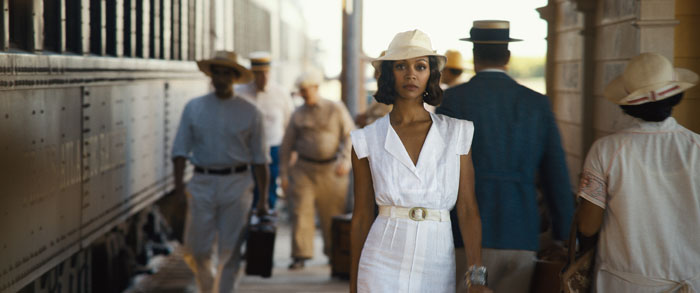
HULFISH: I loved our discussion and I really appreciate you spending some time with me today. GOLDENBERG: My pleasure.
HULLFISH: Thank you so much for your time. I really appreciate it.
To read more interviews in the Art of the Cut series, check out THIS LINK and follow me on Twitter @stevehullfish
This interview was transcribed by speedscriber.com.
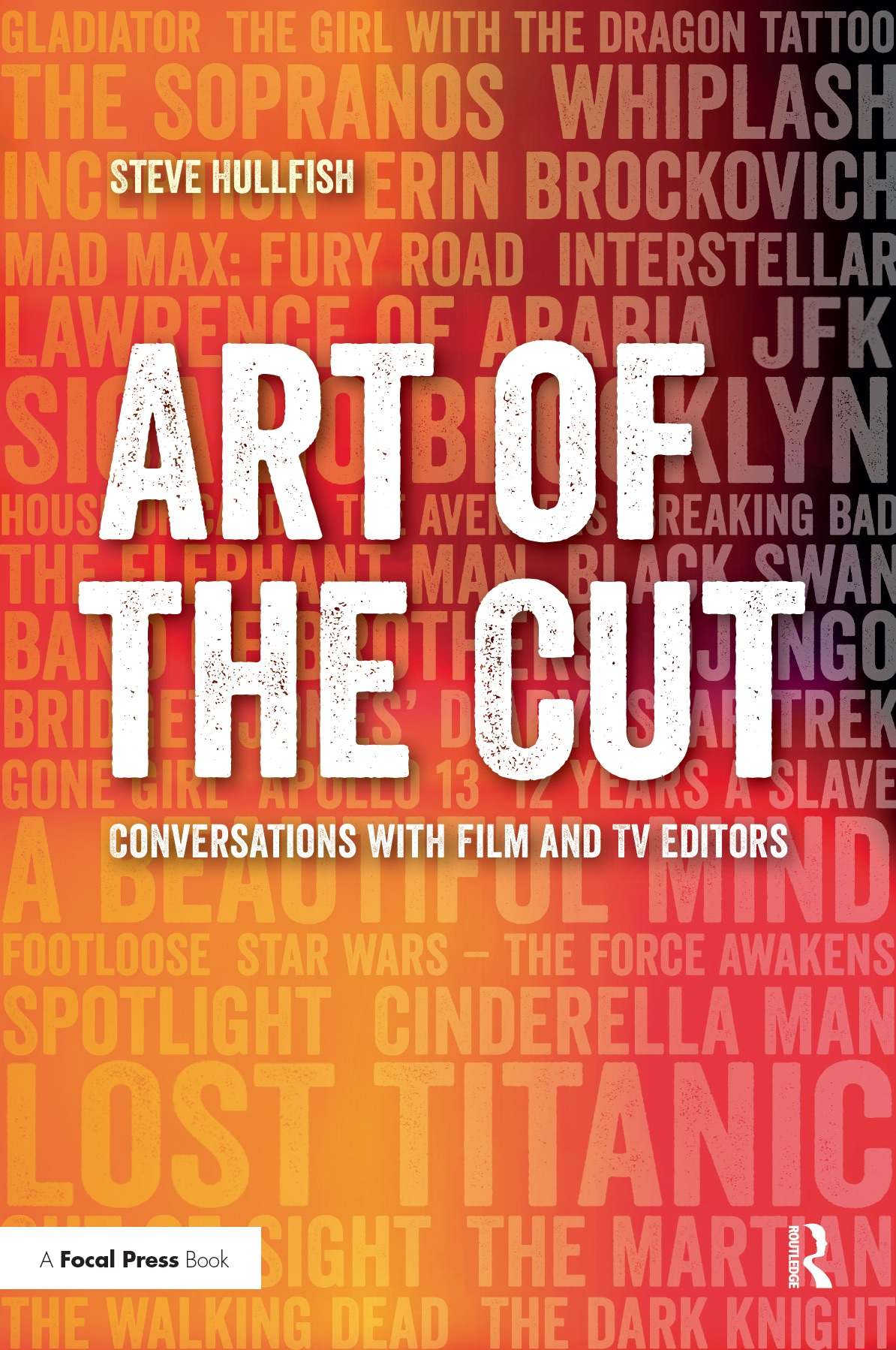 The Art of the Cut interviews have been curated into a book that will be released March 10th and is available for pre-order on Amazon now. The book is not a mere collection of interviews, but a topical virtual roundtable discussion by 50 of the world’s top editors – who among them have more than a dozen Oscars and more than 40 nominations, not to mention dozens of Emmys. The topics include pacing, storytelling, structure, music, sound effects and collaboration.
The Art of the Cut interviews have been curated into a book that will be released March 10th and is available for pre-order on Amazon now. The book is not a mere collection of interviews, but a topical virtual roundtable discussion by 50 of the world’s top editors – who among them have more than a dozen Oscars and more than 40 nominations, not to mention dozens of Emmys. The topics include pacing, storytelling, structure, music, sound effects and collaboration.

Filmtools
Filmmakers go-to destination for pre-production, production & post production equipment!
Shop Now